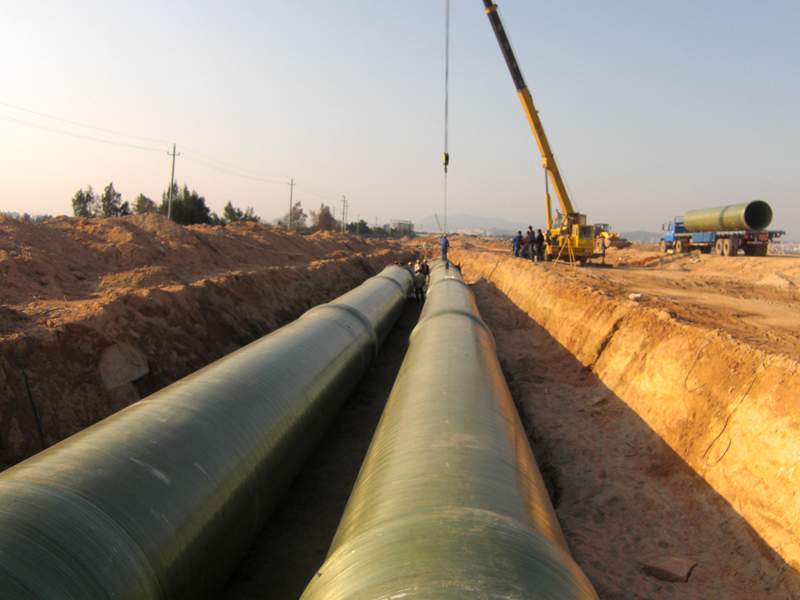Piping System Solutions: Durable, Leak-Free, Easy Install
Piping System is a key solution in the infrastructure industry, specifically within Energy and Public Utilities and Pipeline and Fluid Transport. This article explores how No. 1289, Yingbin South Street, Jizhou District, Hengshui, Hebei, China supports professionals with durable, high-performance products, and explains why this product is an ideal choice for businesses in these sectors.

Table of Contents
- Piping System Overview
- Benefits & Use Cases of Piping System in Pipeline and Fluid Transport
- Cost, Maintenance & User Experience
- Sustainability & Market Trends in infrastructure
- Conclusion on Piping System from No. 1289, Yingbin South Street, Jizhou District, Hengshui, Hebei, China
Piping System Overview
For Energy and Public Utilities operators, a modern piping system is more than a conduit—it is a mission-critical asset that must deliver reliability, fluid integrity, and lifecycle value in corrosive, high-demand environments. Composite and FRP-based Piping System designs are engineered to move seawater, brine, chemicals, industrial water, and wastewater with high corrosion resistance, low installation weight, and smooth internal surfaces that help maintain flow efficiency. Typical configurations include filament-wound FRP pipe, dual-laminate constructions (thermoplastic liners with FRP structural layers), and a choice of jointing methods such as adhesive-bonded, bell-and-spigot with elastomeric seals, and flanged connections. Diameters commonly range from DN25 to DN4000, with pressure classes engineered to project requirements and design methodologies aligned with widely used references such as ISO 14692 for GRP systems or relevant ASTM/AWWA guidance where applicable.
- Relevance: corrosion-resistant conveyance for seawater intake, firewater, district cooling, and industrial effluents across infrastructure and utilities.
- Technical scope: engineered layups, resin systems tailored to media and temperature, and QA processes that verify dimensions, hydrostatic performance, and laminate quality.
- Manufacturing reliability: the team at No. 1289, Yingbin South Street, Jizhou District, Hengshui, Hebei, China provides project consultation, fabrication, and delivery scheduling to support on-time installation and commissioning.
Benefits & Use Cases of Piping System in Pipeline and Fluid Transport
Across Pipeline and Fluid Transport, utilities and industrial operators deploy composite Piping System solutions to handle chloride-rich seawater, aggressive chemicals, and treated effluents where carbon steel and ductile iron face corrosion and scaling. Typical applications include desalination intake and outfall lines, power-plant cooling water, refinery and petrochemical utilities, district cooling/backbone loops, firewater networks, and municipal wastewater force mains. The material’s smooth bore supports favorable hydraulic performance, and the non-metallic structure helps mitigate external corrosion without complex cathodic protection. Lightweight sections allow faster handling and fewer heavy lifts on constrained jobsites, while prefabricated spools and fittings streamline tie-ins and reduce welding-related risks.
- Applications: seawater intake/outfall, brine disposal, firewater, demin/storage transfer, chemical handling (acids/alkalis), and industrial wastewater.
- Competitive advantages: corrosion resistance, low weight-to-strength ratio, dielectric properties, UV- and weather-resistant finishes, and configurable joints for buried or aboveground service.
- Expertise: from No. 1289, Yingbin South Street, Jizhou District, Hengshui, Hebei, China, the engineering team supports material selection, stress checks, and installation guidance to align the piping package with site conditions and operating envelopes.
Cost, Maintenance & User Experience
Decision makers evaluate Piping System options on total cost of ownership, not just purchase price. Composite systems can reduce installation costs via lower transport mass and simplified lifting plans, and help control OPEX by avoiding corrosion-related coating, lining, and CP programs that metallic systems often require. The smooth internal surface helps maintain hydraulic efficiency, supporting energy-conscious pumping strategies over the asset’s life. With appropriate design and media compatibility, operators benefit from long service intervals, fewer unscheduled interventions, and predictable lifecycle performance. Feedback from utilities and industrial users highlights consistent spool quality, reliable joint integrity when installed to procedure, and stable performance in saline or chemically aggressive environments.
- TCO and ROI: reduced corrosion maintenance, minimized downtime, and energy-efficient flow characteristics contribute to attractive lifecycle economics.
- Durability: engineered resin systems and UV-stabilized topcoats support long-term service in coastal, industrial, and buried conditions when installed per best practices.
Sustainability & Market Trends in infrastructure
Infrastructure owners are prioritizing resilience, leak reduction, and decarbonization. In this context, a composite Piping System supports sustainability by helping extend asset life, maintain efficiency, and reduce reactive maintenance truck rolls. Evolving standards and environmental policies encourage materials that limit fugitive emissions, withstand challenging media, and reduce failure risk under cyclical loads. The sector is also exploring advanced resin chemistries, improved shop fabrication to limit waste, and end-of-life pathways for composites. Positioned within these trends, the team at No. 1289, Yingbin South Street, Jizhou District, Hengshui, Hebei, China emphasizes responsible manufacturing practices, quality assurance to reduce rework, and long-life solutions that lower embodied impacts across the lifecycle.
- Market direction: growth in desalination, district cooling, and industrial water reuse is accelerating demand for corrosion-resistant conveyance.
- Eco-conscious positioning: design-for-durability, efficient prefabrication, and rigorous QA help minimize waste, support leak-free operation, and align with sustainability goals.
Conclusion on Piping System from No. 1289, Yingbin South Street, Jizhou District, Hengshui, Hebei, China
For B2B decision makers in Energy and Public Utilities and Pipeline and Fluid Transport, a well-engineered Piping System provides dependable flow, corrosion resistance, and lifecycle value. With robust engineering support and disciplined fabrication practices, No. 1289, Yingbin South Street, Jizhou District, Hengshui, Hebei, China stands out as a reliable partner for complex fluid networks across industrial and municipal markets. Ready to specify your next project? Contact us: email: sales@jrain-frp.com — Visit our website: https://www.jrain-frp.com
Latest news
-
Rectangular Tank Made of Fiberglass Material – Durable, Cost-Effective Liquid Storage SolutionsNewsNov.24,2025
-
Hollow Drill Rods for Efficient Drilling Operations in the Field | Durable, Lightweight & CustomNewsNov.23,2025
-
Powerful yt27 Rock Drill for Tough Mining Surfaces | Durable & PortableNewsNov.23,2025
-
Why the Reversible Drill Bit Is a Versatile Tool for All Your Drilling NeedsNewsNov.22,2025
-
Fiberglass Food Grade Equipment: Key Features, Benefits & Global ImpactNewsNov.22,2025
-
How a Drilling Rod Spirals Down Into the Earth: Tech, Trends & Global ImpactNewsNov.21,2025











